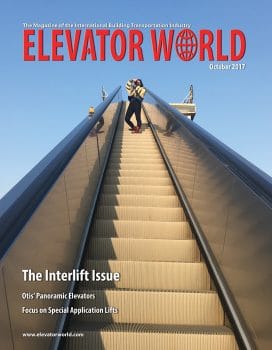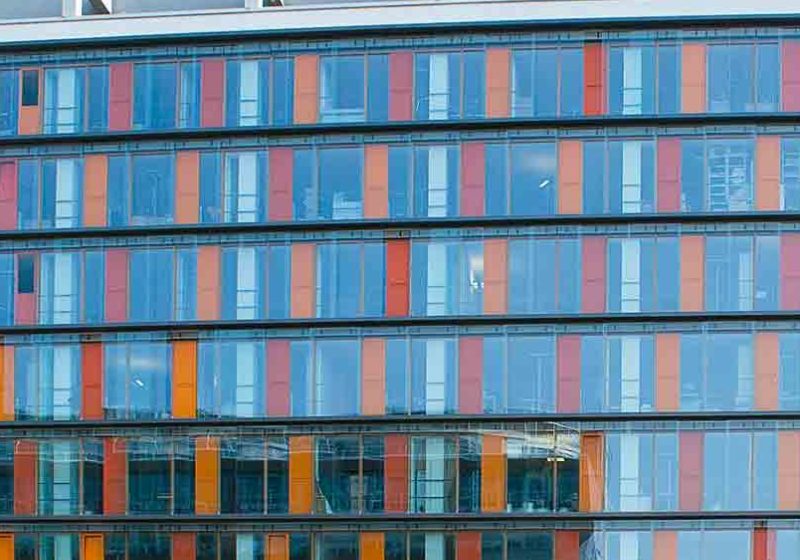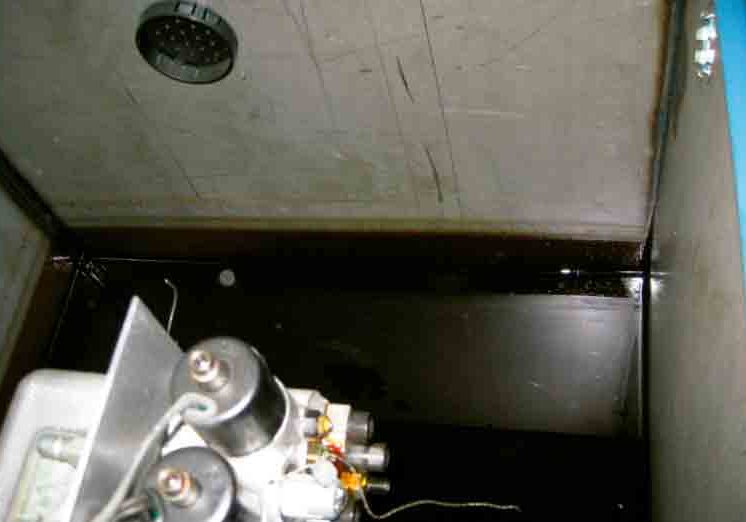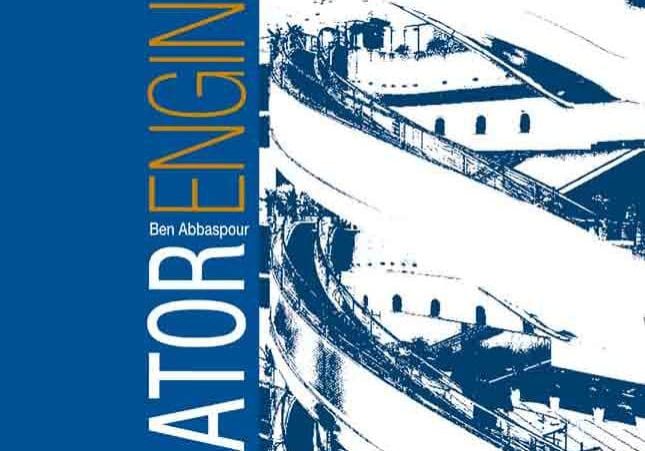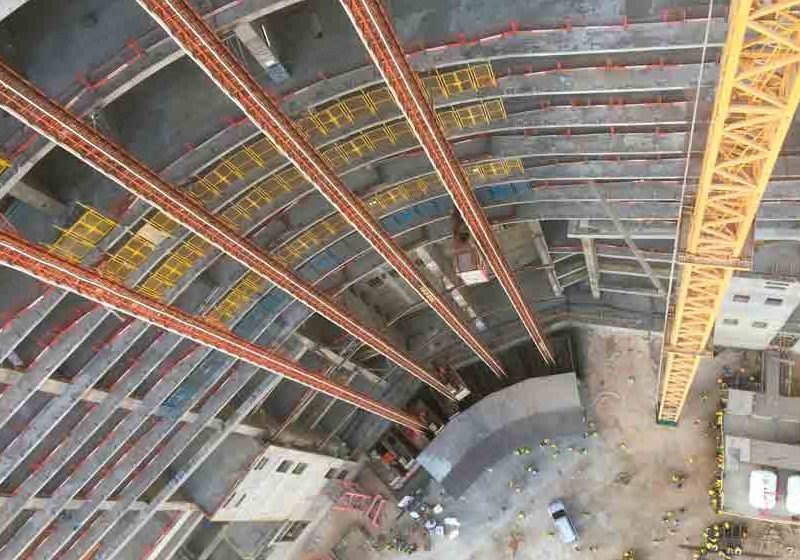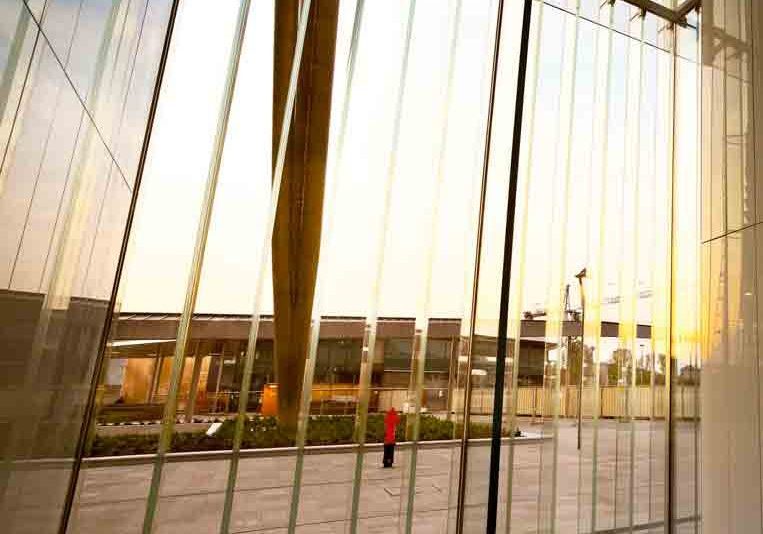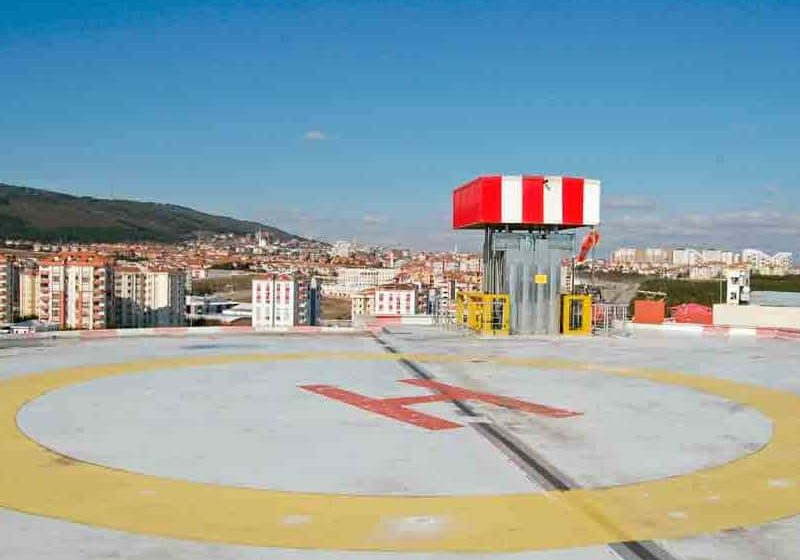Toward a Sustainable Future
Oct 1, 2017

With awareness of environmental protection increasing worldwide, demand for more efficient products to reduce energy and resource consumption is more urgent than ever. The possible environmental impacts associated with products have sparked interest in developing methods to understand and minimize these impacts. One of these techniques is lifecycle assessment (LCA), which addresses the environmental aspects and potential environmental impacts throughout a product’s lifecycle, from raw-material extraction to production, use and, ultimately, end-of-life treatment.[1] These stages of a product’s lifecycle are considered in an LCA:
- Raw materials
- Manufacturing processes
- Transport and packaging
- Installation
- Operation/use
- Maintenance/repairs
- Disposal/recycling
KLEEMANN, a major lift company in the European and global markets, used SimaPro software to perform an LCA that led to the redesign of its Atlas Gigas elevator to be more environmentally friendly. The result was the Atlas Gigas-R.
Standards Provide Guidance
The ISO 14000 family of standards provides practical tools for companies and organizations seeking to manage their environmental responsibilities. ISO 14006 provides guidelines to assist organizations in establishing, documenting, implementing, maintaining and continually improving their environmental management systems (EMSes).[2]
If a product has a useful life of 25-30 years, this timeframe would be responsible for 75% of the whole environmental impact.
Vertical-transportation products are indispensable to urban mobility and accessibility. Passenger comfort and attractive design must be integrated into a large, complex system. Generally speaking, ecodesign contributes to understanding our ecological footprint on the planet. The required data for this approach are the units of materials and energy for the entire lifecycle of a product, as well as a quantification of their effects. LCA, which is an important and integral tool for ecodesign, is divided into the following main categories:
- Upstream Procedures: Procedures that take place regardless of the manufacture of the product, such as mining raw materials and transporting them within the supply chain
- Production and Core Processes: These are the principal manufacturing processes of the product. The procedures of carrying materials and waste management resulting from the above, even if carried out by third parties, are also included.
- Downstream Procedures: Processes that are not controlled by the product manufacturer, but by the product owner. This covers private transport of the product to the consumer, consumption of energy or other consumables, adequate maintenance and out-of-life processes of the used product
Surveys in this field have pointed out that the maximum impact on the environment can be observed during the consumption period, showing the catalytic role it has for the lift industry. Specifically, if a product has a useful life of 25-30 years, this timeframe would be responsible for 75% of the whole environmental impact, whereas the same phase would be responsible for only 50% of the environmental impact if it had a useful life of 10 years. On the other hand, an increased product life would reduce the impact of the materials phase, because the number of functional units served would increase.[3]
A key element in the final stage of the lifecycle is the easiest and fullest possible recycle of the product. The best scenario for a lift is to be designed in such a way that its materials can be dismantled and easily separated into various categories for recycling.
Since 2012, KLEEMANN has implemented an EMS for its facilities. This system has been certified according to ISO 14001. The company also applies a quality-management system certified in accordance with ISO 9001 and implements principal eco-design products, such as Atlas Gigas-R, in accordance with ISO 14006.
The company’s strategic objective is sustainable development in full harmonization with environmental protection, resulting in environmentally superior products. That aim can be achieved by adhering to fundamental rules, criteria and mechanisms for environmental protection, pollution prevention and protection of human health. This ensures preservation of natural resources and gradual restoration of the environment. The strategy is motivated by three factors: nature, society and economy.
The ecodesigned, traction electric lift Atlas Gigas-R was presented earlier this year. Such a vertical lift operates for approximately 25 years, assuming it is maintained properly and makes approximately 150 journeys per day in an average building. Here, that means a lift that has usage defined as low to medium (i.e., a residential lift). The nominal load is 1600 kg, and the maximum rated speed is 1 mps. Distance of travel is 4.7 m, which corresponds to two stops.
Atlas Gigas-R achieves greater energy efficiency by reducing:
- Quantity of raw materials
- Quantity of paints and solvents
- Total unit weight
In accordance with relevant literature, the major environmental impact in the lifecycle of a lift is during its usage stage, followed by the stage when materials are acquired and energy is consumed during construction. The results of this study illustrate the environmental impact of the product’s lifecycle.
Through the extracted charts, a comparison between the earlier model, Atlas Gigas, and the redesigned Atlas Gigas-R is illustrated (see charts).
To quantify the impact a product or service has on the different categories, we used characterization factors. The substances that contribute to an impact category are multiplied by a characterization factor that expresses the relative contribution of the substance. For example, the characterization factor for CO2 in the climate-change impact category can be equal to 1, while the characterization factor of methane can be 25. This means the release of 1 kg of methane causes the same amount of climate change as 25 kg of CO2. The total result is expressed as an impact-category indicator.
This chart compares the two elevator models according to their contribution to different impact categories. It presents the relative contribution, since the results are normalized to the highest value.
The continuous development of all products using the principles of LCA, impact assessment and ecodesign is the basis for the sustainable development of KLEEMANN services and products.
References
[1] www.pre-sustainability.com/download/SimaPro8IntroductionToLCA.pdf
[2] ISO 14006 2011 : Environmental Management Systems — Guidelines for Incorporating Ecodesign (iso.org/standard/43241.html).
[3] Ana Maria Lorente Lafuente. “Life Cycle Analysis and Energy Modelling of Lifts,” Doctoral Thesis, 2013.
Get more of Elevator World. Sign up for our free e-newsletter.

